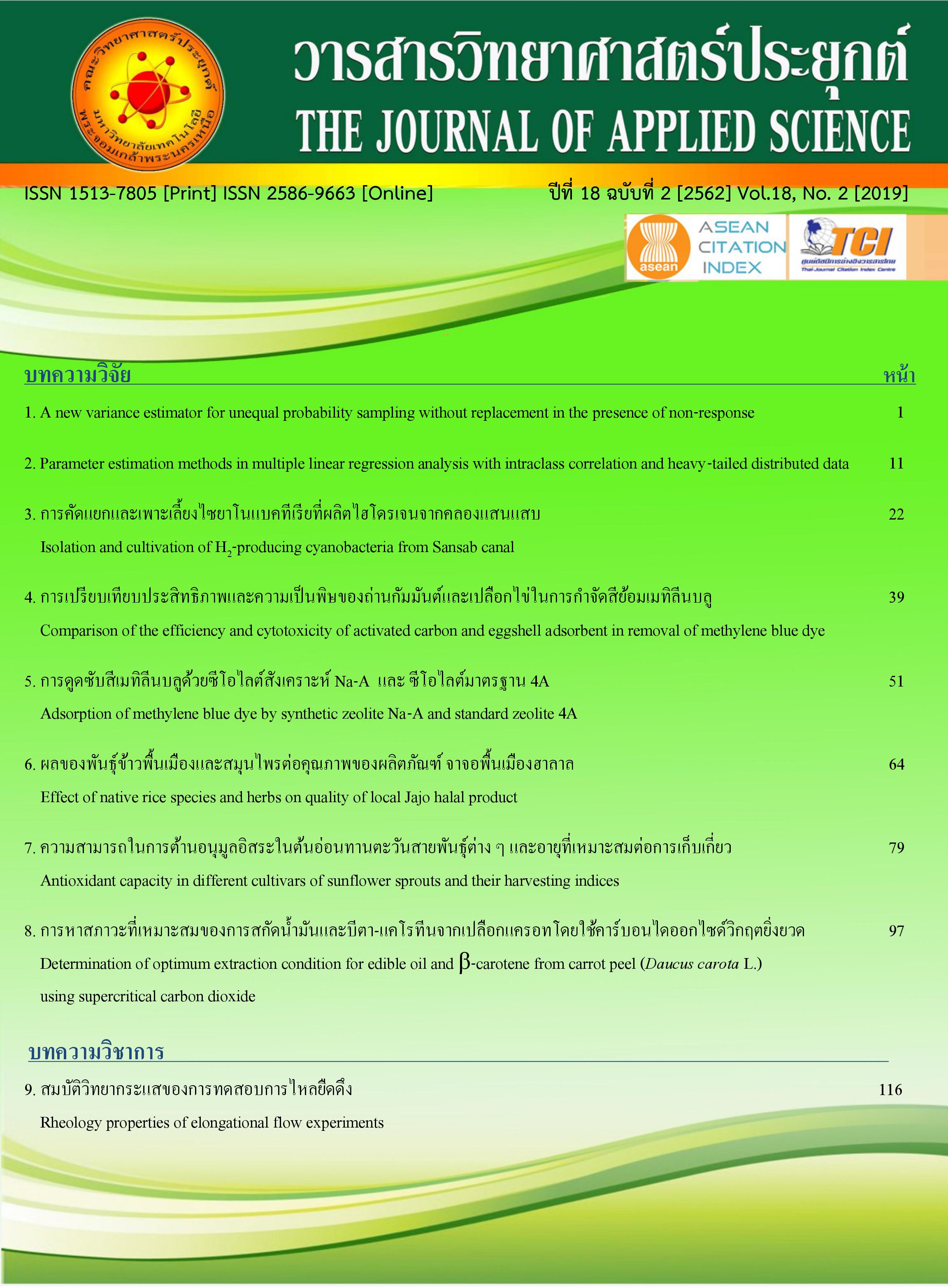Determination of optimum extraction condition for edible oil and beta-carotene from carrot peel (Daucus carota L.) using supercritical carbon dioxide
Keywords:
acid value, carrot peel, edible oil, supercritical carbon dioxide, beta-caroteneAbstract
The objectives of this research were to study the optimum condition for extracting oil from carrot peels using supercritical carbon dioxide and find a mathematical equation to predict the percentage of oil yield, oil extraction efficiency, and beta-carotene content. Central composite design was performed for 2 factors, temperature (32, 39, 56, 73, and 80 °C) and pressure (14.2, 16.5, 22.1, 27.7, and 30.0 MPa), to determine the optimum oil extraction conditions based on the highest value of oil yield, extraction efficiency, and beta-carotene content. It was found that the optimum condition was at 80 °C and 14.2 MPa and when comparing the oil yield, oil extraction efficiency, and beta-carotene content obtained from the experiment at the optimum condition to the values obtained from the prediction with the mathematical model, it was found that the deviation values (%D) were less than 10 percent, indicating that the obtained mathematical model can predict the percentage of oil yield, extraction efficiency, and beta-carotene content well. In addition, it was found that the oil from the carrot peels obtained from the experiment was orange with L* a* b* C* and h* at 33.35 26.08 42.28 48.53 and 57.99°, respectively, beta-carotene content iodine value and oil acidity value at 0.27 mg/100mg db, 116.75 mg iodine/100 g oil, 2.43 mg KOH/g oil, respectively and antioxidant properties based on the ferric-reducing antioxidant power assay at 529.08 µMFe2+/g.


